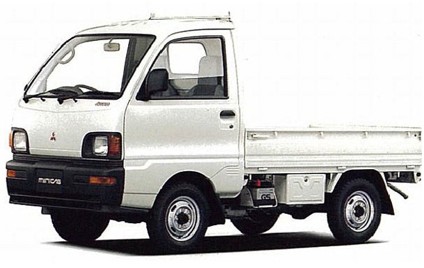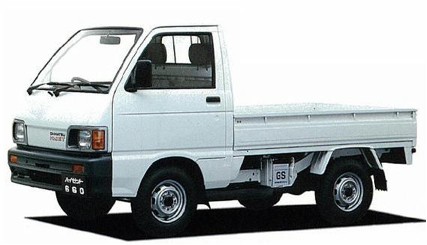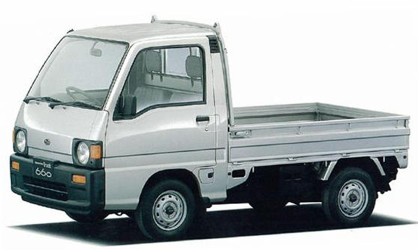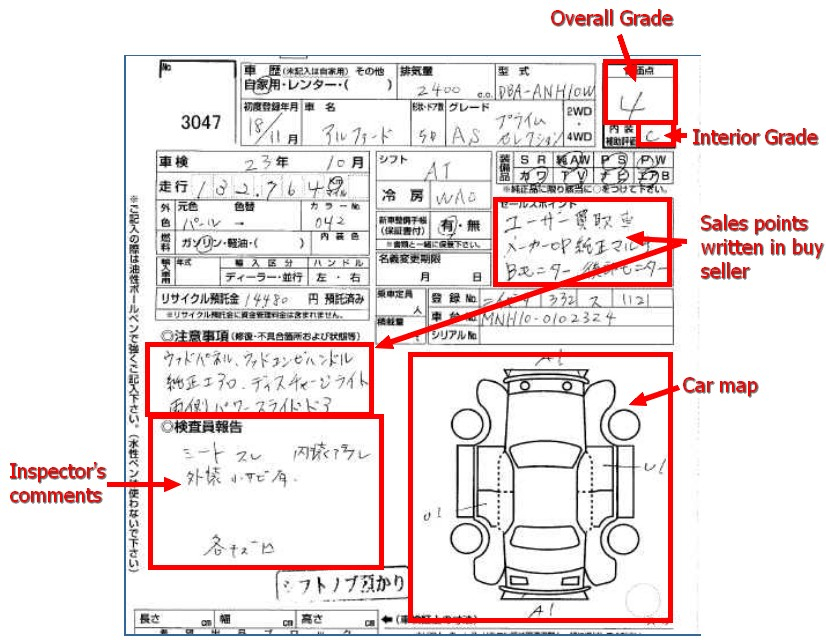Thank You for Your Purchase
Thank You for Your Purchase
Whoops!
Please select at least 3 units
(OPR) One Price Request, is for Dealers to make bulk purchases from BOEKI USA to Retail them in their locations.
Contact us if you are interested to become a JDM Dealer.
Whoops!
Your list is empty.
First bookmark any item to add it in your list.
Your Order Has Been Bocked
We have sent you a confirmation email. That email contains the invoice for your purchase with the instruction for the payment.
Your Order Has Been Bocked
We have sent you a confirmation email. That email contains the invoice for your purchase with the instruction for the payment.
- Home »
- Blog
What is a Japanese Mini Truck or Micro Truck?
Japanese Mini Trucks also known as, Kei Trucks (Kei meaning tiny, small or mini) have been made in Japan for over fifty years. In Japan, these vehicles are mainly used for family farms. They are also used daily for personal and business purposes on their roads. These versatile little vehicles are widely utilized throughout Asia, in agriculture, fisheries, construction and even for firefighting.
Japanese mini trucks are being imported into the US for on & off-road usage. More than half these trucks are purchased by farmers and hunters, however they are not limited to just these categories. Mini trucks are also being widely used as school campus maintenance vehicles, on golf courses, in and around factories, in camps and camp grounds, as maintenance vehicles for large property developments and as an ATV/UTV alternative for the outdoors man, hunter, rancher, farmer and fisherman. Mini trucks are nparalleled when compared to all other off road vehicles.
Due to Japanese laws that regulate the surplus of the older minis, importers bring more used Kei trucks into the US than new. They are shipped from Japan by sea, in containers for sale at prices ranging from US $4,000 to $15,000.
The Japanese mini truck is a tiny but practical pickup available in 2WD and/or 4WD versions, with high/low transmissions, and electronic differential lock options, also. They all have fully enclosed cab, windows, seat belts, windshield wipers, AM radio, cigarette lighter, heater/air vents, lights, signals, and get up to 50 mpg. Some are equipped with A/C too.
They generally have 6 ft. long beds with fold-down/removable sides (dump and scissor lift beds are an option). The truck length limitation of just around 10’ 6”, makes all of these models into a cab forward design with the engine under the seats and bed.
We are currently selling All Makes & Models of Mini Trucks. Our Goal is to purchase vehicles with a very low number of miles. All trucks have heat and only some have air conditioning, which is a highly sought after option. Air conditioning is a rare however, imagine being in your air conditioned mini truck in the heat of summer while your friends are swatting mosquitoes in their John Deere Gator. The windows roll down, the bed sides and tailgate fold down to give you a platform to stack on, while still getting full use of the six foot bed.
These trucks typically go for a long time, it really depends on how well you care for them. They are shipped here straight from Japan and are not someone’s beat up unit, most are in great shape but please do pay attention to the grading system as that will give you an idea of the exterior and interior condition.
Exterior condition is rated 5 through 1, 5 being new or Like New
Interior condition is rated A through D, A being new or Like New
Most trucks will get upwards of 50 mpg, will run up to 60 mph. They all have 4 wheel drive with a high-low range selector. You’ll love all the power packed into these great trucks! All Makes trucks have a three cylinder gas engine. With the exception of Subaru which is 4 cylinder.
For those who don’t know, Daihatsu is the truck division of Toyota & Mazda's trucks are all made by Suzuki. They all average between 38 - 47 horsepower, which is directly applied to the wheels.
These trucks will climb the most steep hill imaginable even while loaded down with firewood or sacks of feed without breaking the slightest traction because of the 4x4, differential lock (rare option) and Low range gear selector all working together. Put it in high gear and you’ll be ready for the road.
These units will put to shame the best UTV & ATV's on the market. Compare the payload capacity, the axles, transmission, top speed, frame construction, hydraulic brakes, turn signals, and windshield wipers with washer, granny low gears 1 through 5 with Reverse and High range gears 1 through 5, to a Kubota, Mule or any other UTV and the mini truck will run circles around them in every single aspect. The axles, transmission, frame, suspension and everything else is designed for day after day use on or off road.
Mini Truck Manufactures
- Suzuki Carry
- Daihatsu Hi-Jet
- Mitsubishi Minicab
- Honda ACTY
- Subaru Sambar
- Mazda Scrum
Engines Available
- 3-Cylinder (Subaru 4-Cylinder)
- Approx. 40-47 Horsepower
- 660cc (550c on 1990 and older models)
- Water cooled
- Unleaded-Fuel
Drive-Train Options
- Manual Transmissions in 4 or 5 speed w/ reverse
- Hi-Lo Transfer Case or EL Gear (certain models)
- 4WD or 2WD
- Independent front suspension, rear solid axle & transaxle
- (4 independent suspension on Subaru Sambar due to rear
- Engine configuration)
- Diff lock and/or axle lock switch (certain models)
Suspensions Components
- Front: Strut Suspension, Coil Springs
- Rear: Leaf Springs and Shocks
Steering & Operation
- Right Hand Drive
- Left Hand Shifter
- Turn signal to the Right
- Windshield wiper switch to the Left
- Standard Pedal Configuration w/ power brake
- Rack and Pinion (Certain Models w/ Power Steering)
Lighting & Electrical System
- Low/High beam headlights (HID’s available on certain models)
- Turn Signals
- Parking Lights & Brake Lights
- Reverse Lights
- Dash Lighting
- In-Cab Light
- Bed Light (Certain Models)
- 12-Vold Solid State Ignition
- 12-Volt Battery
- Alternator
Frame & Cab
- Steel Frame Construction, Some Uni-Body Frame
- Metal Body & Cab
- Side View Mirrors
- Rear View Mirror
Auto Glass
- Large Windshield w/ Wiper & Washer
- Manual Door Windows (Certain models w/ power)
- Rear Cab Window
Wheel & Tires
- 12” Steel Wheels (stock)
- All-Season Tires
Bed Types
- 6’ x 4’
- Fold down Sides & Tail Gate (Also Removable)
- Hydraulic Dump Bed (Certain Models)
- Hydraulic Scissor Dump Bed (Certain Models)
- 880 lbs. Bed Capacity
Standard & Optional Equipments
- Heater with Defrost
- A/C (Certain Models)
- Wipers with Washer
- Radio (AM Stock, FM Most Models with Japanese Frequency)
- Emergency Brake
- Glove Box
- Ash Tray with Lighter (Most Models)
- Safety Handles
- Door Handles
- Door Locks
- Key Ignition
- Sun Visor
- Engine Access Cover (In Bed & Under Seats)
Title & Registration.
We import vehicles which are under 25 year old exemption rule so many States allow them for on road use. We'll provide you with all the paperwork you may need to get it registered. You may also check with your local DMV for registration Options.
All Required paperwork is provided for out of state buyers to legally register Mini Trucks for Road Use.
If you are a Washington Buyer we deal with doing all paperwork for you along with collecting 8.7% Sales Tax.
Please check your local laws to determine if anything you're purchasing is not allowed on public roads in your City/State.
Payment Options
We required $500.00 via PayPal as Deposit for each unit, and remaining payment can be made via Bank Wire, Certified Check or Cash in person.
Sales Tax Informations
State laws require that we charge applicable sales tax on orders shipped to addresses in the state of New Jersey, Washington and New York. All orders outside of New Jersey,Washington and New York will not be charged sales tax and user may charge sales tax in DMV upon registration process.
Financing Options
BOEKI USA works with a number of lenders that specialize in providing loans for imported vehicles.
Light Stream
Must have a 700 minimum credit score & Excellent Credit History but they have been known to loan with 620+.
Collector Car Lending
https://collectorcarlending.com
Must have a 600 minimum credit or Co-Signer.
J. J. Best LLC
Must have a 650 minimum credit score or Co-Signer, 10-15% down.
Navy Federal Credit Union
NW Priority Credit Union
Must be USPS Employee for it to be considered as Auto Loan otherwise it will be considered a Personal Loan & customer will need to be a Clark County Resident.
Shipping Options
Buyer is responsible for vehicle pick up or shipping. If your address is within our shipping distribution network the retes are nominal.
Call or text at 212-729-8293 with your particular destination.
REQUEST A QUOTE
Exterior Condition Rating Chart
5.0 Brand New
4.5 Excellent
4.0 Very Good
3.5 Good
3.0 Fair
2.0 Rusted
Interior Condition Rating Chart
A Brand New
B Very Good
C Fair (Seats Tear, Rip, Scratch)
D Bad (Seats Hole, Burn or Broken)
E Very Bad (Broken Parts, Seats or Dash)
Blocks
Green Block, Above Average Vehicles
Blue Block, Average Vehicles
Yellow Block, Below Average Vehicles
Red Block, Mechanic Specials! Vehicles with Issues
BOEKI USA
BOEKI USA is the gateway to introducing and connecting you to the other side of the world’s automotive experience. While we specialize in importing Japanese Mini Trucks, we provide importing options for various other makes and models into the United States. With locations on each coast of the country (Paterson, NJ / Vancouver, WA & Valley Stream, NY) BOEKI USA thrives to provide you the easiest and best imported automotive experience possible.
Below is a list of the Mini Trucks we stock throughout the year. For more detailed information please contact us.

Suzuki Carry

Honda Acty

Mitsubishi Mini Cab

Daihatsu Toyota Hijet

Subaru Sambar
If you have any question or need help, please fill out and submit the form below. We will respond within 24 hours, though in most cases much faster.
Call Amir at 212-729-8293
or Contact Us by sending us an email.
Call Atif at 212-729-8293
or Contact Us by sending us an email.
Call Amir at 212-729-8293
or Contact Us by sending us an email.














